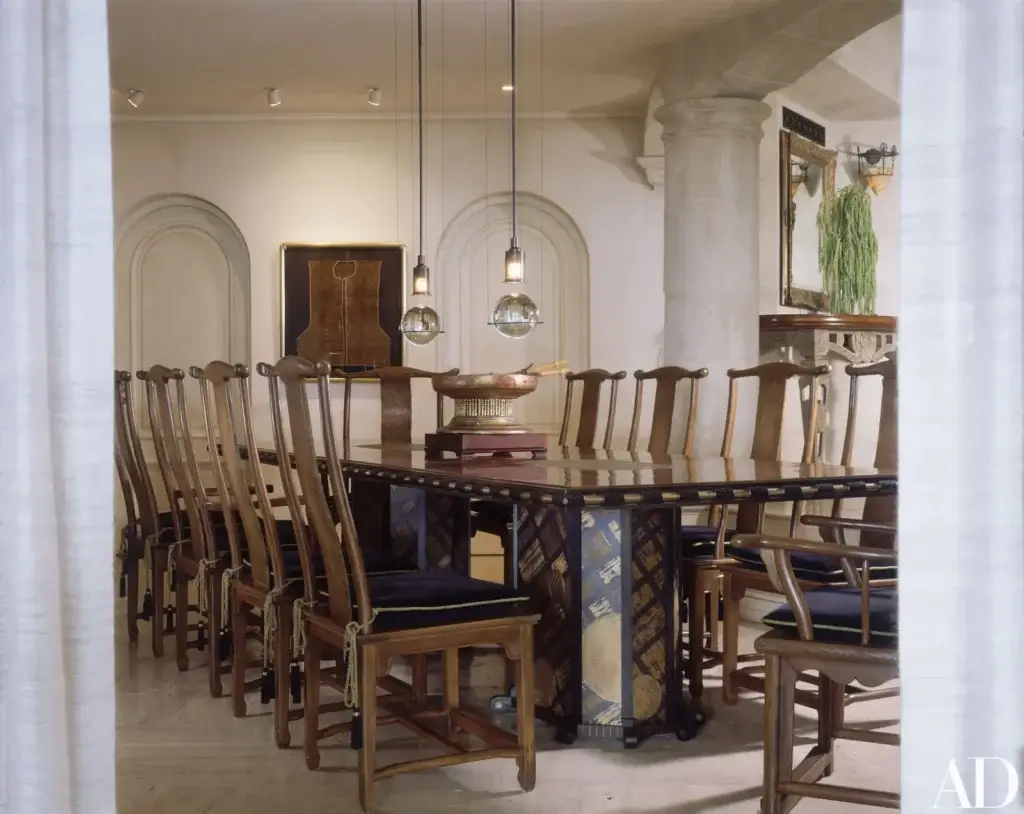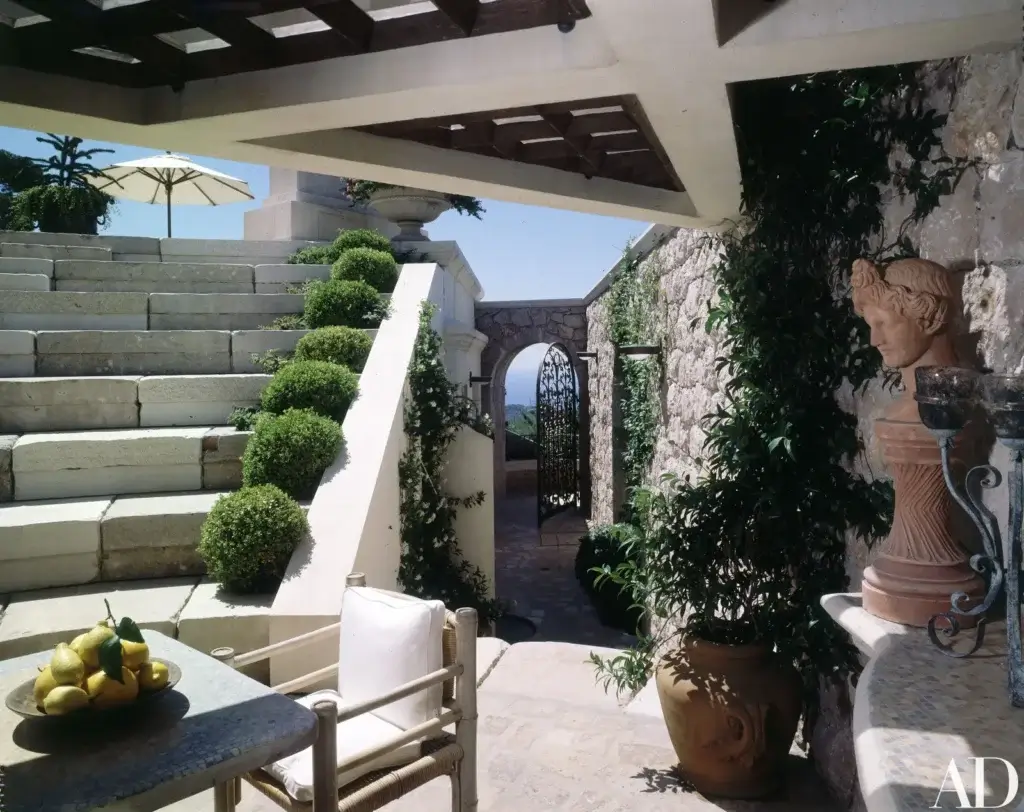Tina Turner, the iconic singer known as the queen of rock and roll, passed away on May 24, 2023, at the age of 83. Her legacy includes a place in the Rock and Roll Hall of Fame, the Grammy Lifetime Achievement Award, and multiple songs enshrined in the Grammy Hall of Fame, including classics like “What’s Love Got to Do with It” and “Proud Mary.” Born in Brownsville, Tennessee, Tina Turner spent her later years in Switzerland, where she became a naturalized citizen in 2013, alongside her husband Erwin Bach, a German-born music executive and producer. While she was often labeled as a “diva” throughout her illustrious career, her life in Europe offered a different perspective. In a 1999 interview with AD, she expressed her love for tranquility, saying, “My work is noisy, but my life is quiet. I need nature and solitude—they nurture me”. Today we will talk about Tina Turner’s French home.
Turner’s serene European lifestyle was a world away from the glitter and glamor of her stage persona. Her idea of a perfect vacation was as simple as reading a book on her terrace while her partner cooked dinner. Turner’s connection to Europe was evident in her real estate investments, including her Swiss properties, such as the 5.5-acre Stäfa property she acquired for $76 million in 2022. Turner is survived by Erwin Bach and their two sons.

In the spirit of remembering the iconic artist, let’s revisit Architectural Digest’s tour of Tina Turner’s villa on the French Riviera from their March 2000 issue. This villa provided a glimpse into the legendary singer’s decadently peaceful style.
The year was 1999, the eve of the last solar eclipse of the millennium, and Europe was abuzz with anticipation. Tina Turner, radiant in white muslin, set up her telescope on her villa’s terrace, a serene retreat perched above the French Riviera. Turner, having experienced both celestial and personal eclipses, knew that the sun would shine again.
Having driven from her primary residence in Switzerland, Turner was expecting friends from London, Paris, and New York. It wasn’t the most opportune moment for a leisurely house tour, especially given her impending album launch and world tour preparations. But Turner, the grande dame of rock, was relaxed and gracious despite the entourage and upcoming film crew.

Turner, at the age of sixty, possessed a charisma that few women of any age could rival. What’s remarkable is how different her private persona was from her public diva image. Her closet lacked sequins, and she confessed, “I don’t even wear colors. My work is noisy, but my life is quiet. I need nature and solitude—they nurture me. My idea of a vacation is reading a book on the terrace while my boyfriend cooks us dinner.”
Turner’s culinary tastes may have been rustic, but her literary and aesthetic preferences were decidedly refined. She admired classical Greek and Roman aesthetics, collected Chinese art, and studied Buddhism, though she kept her spiritual practices private. Her electric stage presence was a stark contrast to her grounded soul.
Turner moved to Europe with her partner, Erwin Bach, a marketing director with EMI Records, around twelve years before the interview. Her career, which had faced challenges after her divorce from Ike Turner, had been revived abroad and then successfully reintroduced to the United States. Turner was deeply grateful for the support of her international fans.

During their time in Germany, Turner and Bach discovered the beauty of the south of France. Turner initially rented a “little pink house” near her current villa, perched atop a hill. Unlike the glitzy social scene in coastal resorts, she found solace in the serene atmosphere of her hillside retreat, which she described as “a very spiritual place.”
Turner’s villa, a multi-level creation by architect Bruno Guistini, epitomized grandeur balanced with informality. The villa featured terraces, patios, and balconies that extended from nearly every major room, offering panoramic views of the Riviera—a perfect setting for dining, sunbathing, and relaxation.
The interior design of Turner’s villa was a collaborative effort with renowned designers Stephen Sills and James Huniford. They shared a mutual appreciation for art and culture, and Turner’s intuitive approach to design was a key factor in their collaboration.
Her villa featured a mix of styles, including Louis Philippe furniture, Art Deco side tables, and an ebony dining table by André Dubreuil. A small library was created where Turner could write and study, surrounded by her collection of leather-bound books on art, religion, and ancient history.

In the basement, a spa, screening room, and trophy rooms offered all the amenities expected by a superstar like Turner. She had also adorned her home with her collections of black-and-white photographs and stringed instruments.
Throughout her villa, the architecture paid homage to classical Greek and Roman influences, reminiscent of the Villa Kérylos in Beaulieu. Terraced amphitheaters, stenciled plasterwork, Greek and Roman pottery, and bronze chandeliers added to the villa’s timeless elegance.
For Tina Turner, her villa was not just a home; it was her sanctuary—a place where she could nurture her soul and find inspiration. The captivating blend of extravagance and humility, of the spiritual and the sensual, reflected the essence of an ageless artist who had experienced life’s vicissitudes and emerged stronger with each eclipse.

Turner’s story was one of resilience and triumph, and her villa on the French Riviera was a testament to her enduring spirit. She believed in dreams, revered ancient cultures, and had the unwavering faith that after every eclipse, the sun would shine again.

